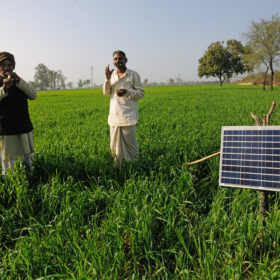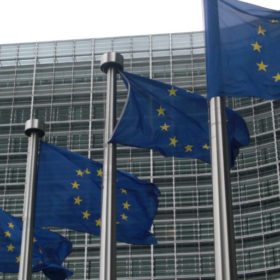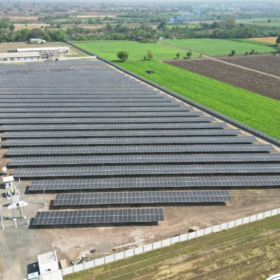Court to hear Vikram Solar’s safeguard duty petition next week
The Government of India will also consider changes to the 25% safeguard duty imposed on solar cell imports from China and Malaysia only after the next hearing in the Odisha High Court, which stayed the levy.
Safeguard duty fallout: NTPC and MPUVNL delay solar auctions
Responding to developer requests, the state-run NTPC has deferred a 2 GW solar auction by a week, to Tuesday. Madhya Pradesh Urja Vikas Nigam Ltd is another state-owned corporation that has extended its bid submission deadline – for 33 MWp of rooftop solar – from August 9 to August 17, after similar requests.
Few winners as India imposes 25% safeguard duty, says IHS Markit
The tariff means PV projects will pause as developers adjust procurement strategies and new tenders risk delays or cancellation. The two-year limit on the duty will not be long enough to prompt more cell manufacturing capacity and as for imports, there are doubts over how the origin of cells will be adjudicated so that Chinese and Malaysian cells are subject to the charge, say analysts.
Even with duties, Chinese PV modules will be competitive in India
Despite safeguard tariffs against certain imports of solar PV products into India, Chinese manufactured modules will remain competitive, says TrendForce. It further anticipates PV demand falling 30% in fiscal year 2018 in India, while cost pressures will mount for EPCs and project developers.
India imposes 25% safeguard duty on solar imports
The Indian government has imposed a safeguard duty of 25% on solar imports from China and Malaysia for two years. The Ministry of Finance (Department of Revenue) levied the duty based on the final recommendations proposed by the Directorate General of Trade Remedies (DGTR). While most industry players are dismayed, believing project costs could “immediately” go up by 15%, others are more optimistic.
India’s trade war will have global repercussions
India is currently the second largest market in the world for PV module demand. With China’s domestic demand frozen since the 31/5 notification, the country’s total module demand in 2018 will likely only achieve 32-34 GW. This will allow India, which may surpass 10 GW in annual demand, to reach 13% of global PV demand this year. As a result, the future of India’s trade war has become an influential factor in the global PV industry.
Global off-grid renewable capacity tripled between 2008 and 2017
While Africa has emerged as a dynamic, fast-moving hub, Asia leads in capacity deployment with its total capacity more than tripling to nearly 4.3 GW in 2017 from 1.3 GW in 2008, finds IRENA. Particularly, in India, a strong policy has pushed deployment of off-grid solar for agriculture and public end-uses.
EU MIP decision to have more effect on Indian PV market than safeguard tariffs
The proposed safeguard tariffs on imports from China and Malaysia are expected to generate a number of painful short-term impacts. Overall they are not expected to change much in the market, however, says TrendForce. What will have a bigger effect is the EU’s final MIP decision, due in September.
Government body recommends 25% tariff on Chinese and Malaysian cells and modules
Phased import tariff would fall to 20% 12 months after introduction and 15% for final six months of a proposed two-year period. Industry watchers say the cost of Indian solar energy could rise by up to 30%.
LDK Solar awarded $16 million in solar panel dispute with Hindustan Clean Energy
An Indian court has issued a nearly US$16 million arbitral award to Chinese PV company LDK Solar Hi-Tech following its dispute with Indian renewable energy company, Hindustan Clean Energy (formerly Moser Bear Clean Energy) over a solar panel supply agreement. The amount is to be paid within 30 days from the date of the award, and includes the balance of purchase price, liquidated damages and legal fees.













